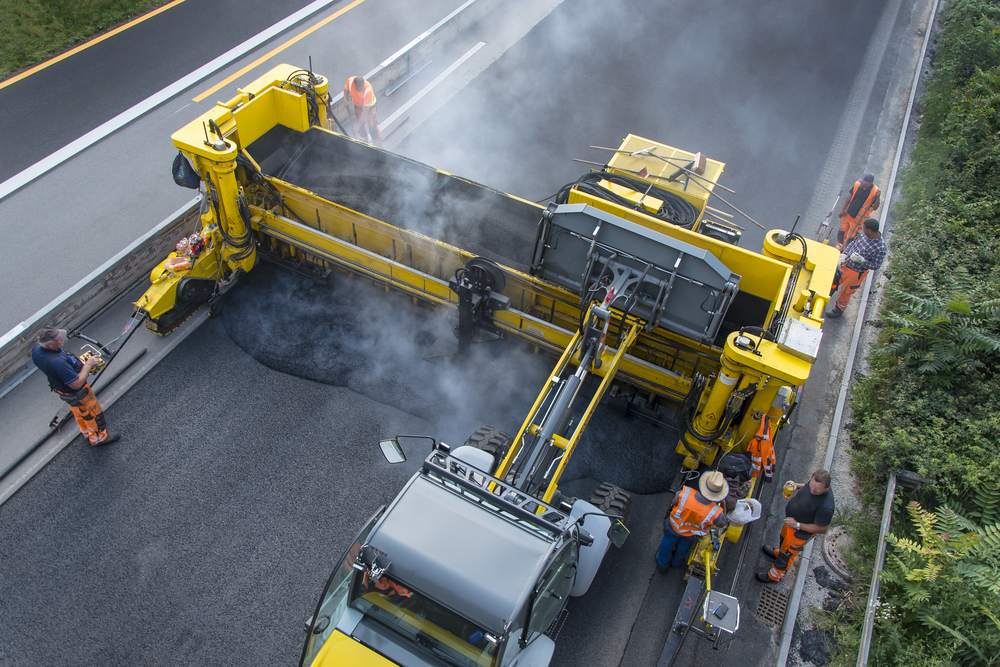Not known Factual Statements About A1 Professional Asphalt & Sealing Llc
Some Ideas on A1 Professional Asphalt & Sealing Llc You Need To Know
Table of ContentsSome Known Details About A1 Professional Asphalt & Sealing Llc The Ultimate Guide To A1 Professional Asphalt & Sealing LlcThe 6-Second Trick For A1 Professional Asphalt & Sealing LlcA1 Professional Asphalt & Sealing Llc - TruthsA1 Professional Asphalt & Sealing Llc - The Facts

The oil in a car engine is not simply oil. It contains a range of ingredients to enhance the vehicle's efficiency. These consist of polymers, thickness modifiers, heat stabilizers, extra lubricating substances, and wear ingredients. The REOB has all the additives that were in the waste oil in addition to the wear metals from the engine (generally iron and copper).
However, by making several blends making use of various REOB examples and various asphalt binders, the variations mostly can be averaged out. Several States provided samples of recognized REOB composition to TFHRC scientists, who analyzed the samples to compare the percentage of added (recognized) REOB to the discovered (evaluated) quantity. The analyses showed an equivalent percent of added and discovered REOB.
Some Known Details About A1 Professional Asphalt & Sealing Llc
None of those States recognized that the asphalt they were buying included REOB. One State insisted its examples had no REOB - https://myanimelist.net/profile/alasphaltseal.
Of the 1,532 samples tested, 12 percent included REOB, and some included substantially high levels of it at 1020 percent. The highest degree was 34 percent in an example from Texas, which TxDOT had used in a patching substance. This testing additionally disclosed the existence of phosphoric acid in 11 percent of the samples, and 2 percent included ground tire rubber.
Two years earlier at TRB's annual meeting, the Federal scientists held an REOB workshop and presented the findings of their laboratory analyses to a standing room-only crowd. Some companies do not particularly prohibit REOB, they do impose physical tests that preclude its useeffectively a restriction. Others do not ban it by requirements, yet have contracts with asphalt suppliers to prevent making use of REOB
A1 Professional Asphalt & Sealing Llc Fundamentals Explained
A handful do allow REOB, some within specific limits. For example, Ohio and Texas limitation degrees to less than 5 percent of the asphalt. To develop a reputable examination approach that all States can use, the TFHRC researchers established a round-robin examination plan. The participants are 11 State highway companies (Illinois, Massachusetts, Minnesota, Mississippi, Montana, North Carolina, Oklahoma, South Carolina, Texas, Vermont, and Wyoming), 2 independent screening laboratories, the Ministry of Transportation in Ontario, Queen's University in Ontario, and an Ontario paving service provider.
The participants are checking the samples independently using the standards offered by the TFHRC scientists. The outcome will be a recommended AASHTO examination technique that any type of State can adopt and make use of.
The sidewalk with REOB, which is located 0.6 mile (1 kilometer) from the sidewalk without REOB, has similar subgrade, web traffic density, and climate. The sector of Highway655 with 5 to 10 percent REOB revealed considerable cracking. In this instance, the visibility of REOB was the determined cause of splitting at a low temperatures.
"In our experience in Canada, also little quantities of 23 percent can be an issue." A section of test sidewalk in Minnesota (MN1-4) discovered to include REOB also fractured prematurely. The sidewalk carried out well for the initial 3 to 4 years, but after that began to split. This sidewalk is likewise based on reduced temperature levels.
Little Known Facts About A1 Professional Asphalt & Sealing Llc.
The examinations were not extensive, but they showed that at levels of 6 percent or more, the tensile strength of the asphalt went down considerably. At a level of 3.5 percent REOB, the variant in the physical examination approaches was higher than the effect of REOB. It was hard for scientists to examine whether REOB was existing. https://www.webtoolhub.com/profile.aspx?user=42388970.

One binder specification taken into consideration is the distinction between the reduced temperature vital spec temperature for rigidity (S) in the flexing light beam rheometer and the bending beam rheometer creep incline (m-value) kept in mind as Tcritical. Two independent study groups, one from AASHTO and the various other from the Asphalt Institute, concluded that more study is required on the use of REOB in asphalt.
Formerly, all asphalt screening measured design residential or commercial properties such as stiffness. These tests do disappoint what materials had actually been included in the asphalt. One sample gotten throughout the TFHRC research study had a very strange evaluation. The sample had the adhering to test outcomes: Superpave PG 64-28 with a high temperature grade of 67.3 Tcritical on the flexing beam rheometer was 6.7 levels Celsius.

6 Easy Facts About A1 Professional Asphalt & Sealing Llc Shown
These results demonstrate there are weak points in the standardized useful site design testing methods that may be made use of. The producer may have a financial advantage and the item passes all the standardized tests, but the product may not be helpful to ensuring long-lasting performance. To address this concern and the growth of brand-new asphalt ingredients and extenders, TFHRC is beginning a study program to utilize portable spectroscopic tools, x-ray fluorescence spectroscopy, and Fourier transform infrared spectroscopy to allow analyses to be carried out in the field as opposed to needing to take samples back to the lab.